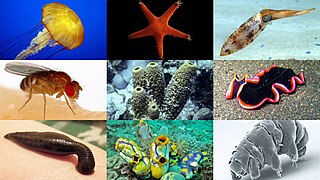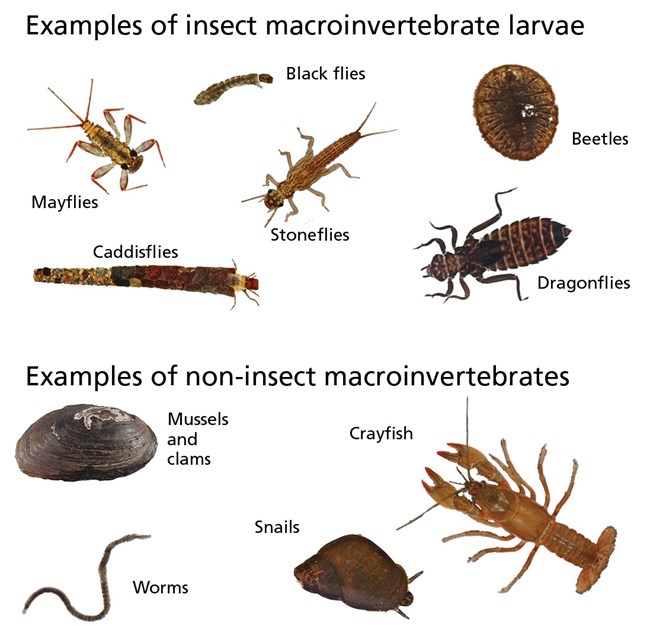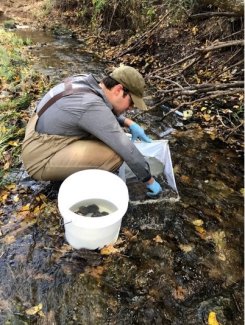Topic meaning of invertebrate: Embark on a journey through the fascinating world of invertebrates, the unsung heroes of biodiversity, and discover the remarkable creatures that thrive without a backbone, shaping our natural world in myriad unseen ways.
Table of Content
- What is the meaning of invertebrate?
- Definition and Characteristics of Invertebrates
- Scientific Classification and Taxonomy of Invertebrates
- Major Groups and Examples of Invertebrates
- Biological and Ecological Significance of Invertebrates
- Evolutionary Perspectives and Relationship to Vertebrates
- YOUTUBE: Invertebrate Meaning
- Diversity and Adaptation in Invertebrate Species
- Role of Invertebrates in Ecosystems and Human Life
- Challenges and Threats to Invertebrate Populations
- Conservation Efforts and Future Research Directions
What is the meaning of invertebrate?
Invertebrate refers to any animal that lacks a vertebral column or backbone. In contrast to vertebrates, which include animals with cartilaginous or bony skeletons, invertebrates do not have a spinal column. They make up the majority of the animal kingdom and exhibit a wide range of body shapes, sizes, and adaptations. Invertebrates include animals such as insects, spiders, mollusks, worms, and crustaceans.
To summarize:
- Invertebrates are animals without a backbone.
- They make up the majority of the animal kingdom.
- Invertebrates exhibit diverse body shapes, sizes, and adaptations.
- Examples of invertebrates include insects, spiders, mollusks, worms, and crustaceans.
In conclusion, the term \"invertebrate\" refers to animals that do not possess a vertebral column or backbone.
READ MORE:
Definition and Characteristics of Invertebrates
An invertebrate is a type of animal lacking a vertebral column or backbone. This diverse group encompasses a vast majority of animal species, estimated to be over 90% of all living animal species. Invertebrates are found worldwide and include a range of organisms as varied as sea stars, earthworms, sponges, jellyfish, lobsters, crabs, insects, and spiders. Their lack of a backbone is a defining characteristic, distinguishing them from vertebrates.
- Classification: Invertebrates fall under the kingdom Animalia and are classified as a paraphyletic group, which means they consist of all the animals that are not part of the subphylum Vertebrata.
- Diversity and Size: Invertebrates are incredibly diverse, varying widely in size from microscopic organisms to large species like the colossal squid.
- Phyla: Some well-known phyla of invertebrates include arthropods, mollusks, annelids, echinoderms, flatworms, cnidarians, and sponges.
Despite their lack of a vertebral column, invertebrates play crucial roles in ecosystems and exhibit a wide array of physical and behavioral adaptations. They range from simple organisms like sponges, which lack true tissues and organs, to more complex forms like octopuses, known for their intelligence.

Scientific Classification and Taxonomy of Invertebrates
Invertebrates, encompassing a vast array of species, are scientifically classified under the kingdom Animalia. This classification places them in a broad group known as Eukaryota, within the unranked group Filozoa. Despite the diversity, these creatures are united by the absence of a vertebral column, a characteristic which has evolved from the notochord.
- Classification Challenges: The term "invertebrate" is more of an umbrella term rather than a precise taxonomic classification, as it includes all animal groups not in the subphylum Vertebrata. This categorization makes invertebrates a paraphyletic group.
- Phyla and Diversity: Invertebrates consist of numerous phyla, including arthropods, mollusks, annelids, echinoderms, flatworms, cnidarians, and sponges. Each of these phyla represents a distinct body plan and lifestyle.
- Evolutionary Relationships: The study of invertebrates has significantly contributed to our understanding of evolution, as evidenced by the works of Charles Darwin and Alfred Russel Wallace. Evolutionary relationships, rather than morphological similarities, have become a crucial aspect of classification in modern taxonomy.
- Notable Examples: The invertebrate group includes fascinating creatures like the Japanese spider crab, the largest known arthropod, and the giant squid, one of the largest known cephalopods.
Classification within the invertebrate domain is complex due to the sheer diversity and evolutionary history. However, this complexity offers a rich tapestry of life that showcases the adaptability and variety of living organisms without a backbone.
Major Groups and Examples of Invertebrates
Invertebrates, constituting a significant majority of the animal kingdom, are classified into several major groups, each with unique characteristics and examples.
- Arthropods: This is the largest phylum, including insects, spiders, and crustaceans like crabs and lobsters. Notable examples are the honeybee, known for its crucial role in pollination, and the red king crab, one of the largest crustaceans.
- Mollusks: This diverse group includes snails, clams, and cephalopods like squids and octopuses. The giant squid is a remarkable example, known for its enormous size and deep-sea habitat.
- Annelids: These segmented worms include earthworms and leeches. Earthworms are particularly beneficial for soil health, aiding in aeration and nutrient distribution.
- Echinoderms: Starfish and sea urchins fall under this category. The crown-of-thorns starfish is notable for its impact on coral reef ecosystems.
- Cnidarians: This group includes jellyfish, corals, and sea anemones. The box jellyfish is known for its potent venom.
- Flatworms: Comprising both free-living and parasitic species, this group includes the planarian, a model organism in scientific research.
- Porifera: Commonly known as sponges, these simple organisms play a crucial role in marine ecosystems as filter feeders.
Each of these groups exhibits a range of adaptations to their respective environments, showcasing the incredible diversity and resilience of invertebrate life.

Biological and Ecological Significance of Invertebrates
Invertebrates play an indispensable role in both biological and ecological systems. Their significance spans various aspects of the environment and contributes to the stability and health of ecosystems worldwide.
- Pollination: Many invertebrates, particularly insects like bees and butterflies, are crucial pollinators for a wide range of plant species, including numerous crops vital to human agriculture.
- Decomposition: Decomposers like earthworms and certain insect larvae break down organic matter, enriching soil fertility and promoting nutrient cycling in ecosystems.
- Food Web Dynamics: Invertebrates form a significant part of the food web, serving as primary consumers of plants and as prey for various vertebrates, thus maintaining ecological balance.
- Biodiversity Indicators: The presence and health of invertebrate populations often indicate the overall health of an ecosystem, making them valuable for biological monitoring and conservation efforts.
- Biomedical Research: Certain invertebrates, like nematodes and fruit flies, are key model organisms in genetic and medical research, contributing to our understanding of disease and developmental biology.
- Ecosystem Engineers: Species like corals build and shape habitats, creating ecosystems like coral reefs that support a diverse range of marine life.
- Human Economy: Beyond ecological roles, invertebrates also contribute significantly to human economies, particularly through the seafood industry and in some cultures, as direct sources of food.
Understanding the biological and ecological importance of invertebrates is crucial for environmental conservation and maintaining the health of our planet"s diverse ecosystems.
Evolutionary Perspectives and Relationship to Vertebrates
Invertebrates, encompassing a diverse array of species, are distinguished primarily by their lack of a vertebral column or backbone. This group includes a vast majority of the animal kingdom, with estimates suggesting that more than 90% of all animal species are invertebrates. Invertebrates display a rich variety in terms of size, form, and habitat, ranging from microscopic organisms to large creatures like the colossal squid.
Evolutionarily, invertebrates and vertebrates diverged from a common ancestor. This divergence has led to the development of vastly different biological structures and functions. Invertebrates have developed a variety of body plans, some possessing fluid-filled, hydrostatic skeletons, like jellyfish and worms, while others have hard exoskeletons, as seen in insects and crustaceans.
Some invertebrate taxa, such as Tunicata and Cephalochordata, share a closer evolutionary relationship with vertebrates. These groups are more closely related to vertebrates than to other invertebrates, challenging the traditional bifurcation of the animal kingdom into vertebrates and invertebrates. This complexity illustrates the dynamic and intricate nature of evolutionary relationships in the animal kingdom.
The evolutionary journey of invertebrates is not only fascinating but also critical for understanding the broader aspects of biodiversity and the evolutionary processes that shape life on Earth. The study of invertebrates provides valuable insights into the adaptive strategies and survival mechanisms employed by various species across different environments.
In conclusion, the evolutionary relationship between invertebrates and vertebrates is marked by both distinct differences and surprising similarities. This relationship highlights the intricate and interconnected nature of life"s evolutionary tapestry, with invertebrates playing a pivotal role in the ecological balance and biological diversity of our planet.

Invertebrate Meaning
\"Discover the fascinating world of invertebrates! Join us on a visual journey filled with colorful beetles, delicate butterflies, and intricate marine creatures. Explore their diversity and learn about their unique adaptations. Watch our video to uncover the extraordinary lives of these small, but incredible, organisms.\"
What is the meaning of invertebrate?
\"Unlock the hidden depths of meaning in our lives! Delve into the philosophical, spiritual, and emotional aspects of existence in this thought-provoking video. Gain insights into different perspectives on the meaning of life, love, and purpose. Expand your understanding and open your mind to new possibilities by watching our eye-opening exploration of meaning.\"
Diversity and Adaptation in Invertebrate Species
Invertebrates, representing over 90% of all animal species, exhibit a staggering diversity in form, function, and habitat. They range from microscopic organisms to the colossal squid, showcasing the breadth of adaptation and evolution within this group.
Their lack of a vertebral column has led to a myriad of body plans and survival strategies. Some invertebrates, like jellyfish and worms, possess fluid-filled, hydrostatic skeletons, while others, such as insects and crustaceans, are protected by hard exoskeletons. This diversity is a testament to the remarkable adaptability and resilience of invertebrates across various ecosystems.
- Phyla such as Arthropoda, Mollusca, Annelida, Echinodermata, Flatworms, Cnidarians, and Sponges represent the vast array of invertebrate life forms.
- Invertebrates play crucial roles in their ecosystems, serving as pollinators, decomposers, and food sources for other animals.
- Their adaptation mechanisms, from camouflage to regeneration, are as diverse as their physical forms.
Moreover, some groups of invertebrates, like Tunicata and Cephalochordata, share a closer evolutionary link to vertebrates, challenging the simple binary classification of vertebrates and invertebrates. This complexity underscores the interconnectedness of all life forms and the evolutionary processes that shape them.
In conclusion, the study of invertebrates is not just about understanding a category of animals without backbones, but it also provides insights into the incredible adaptability and diversity of life on Earth. Invertebrates continue to be a focus of scientific research, shedding light on the mysteries of evolution, adaptation, and the intricate balance of ecosystems.
Role of Invertebrates in Ecosystems and Human Life
Invertebrates, encompassing a vast array of species, play crucial roles in ecosystems and have significant impacts on human life. These organisms, which lack a vertebral column, are integral to the balance and functioning of various environments across the globe.
- Pollination: Many invertebrates, especially insects like bees and butterflies, are vital pollinators for numerous plants, including those crucial for human agriculture. Without these creatures, the existence of many plant species and the production of fruits and vegetables would be severely impacted.
- Decomposition: Invertebrates such as earthworms and certain insects contribute to the decomposition of organic matter. This process is essential for nutrient cycling and soil health, supporting plant growth and agricultural productivity.
- Food Source: Invertebrates form a significant part of the food web. They are a primary food source for many higher organisms, including fish, birds, and mammals. Consequently, they are indirectly crucial to human food chains.
- Biodiversity Indicators: The presence and health of invertebrate populations are often indicators of biodiversity and the overall health of ecosystems. They help in monitoring environmental changes and ecosystem stability.
- Biomedical Research: Several invertebrates, like nematodes and fruit flies, are fundamental to biomedical research due to their simple body plans and genetic similarities to humans. They are crucial in understanding disease processes and testing new treatments.
- Ecosystem Engineers: Species like ants and termites significantly alter their habitats through their activities. These changes can have profound effects on the availability of resources for other organisms, influencing the structure of ecosystems.
- Cultural and Economic Impact: Invertebrates also have a cultural significance in many societies and contribute to economies, particularly through industries like silk (from silkworms) and honey production (from bees).
In conclusion, invertebrates, while often overlooked, are essential contributors to the health of ecosystems and have diverse roles that affect human life in numerous ways. Their conservation is vital for maintaining ecological balance and supporting sustainable human development.

Challenges and Threats to Invertebrate Populations
Invertebrates, which include a diverse range of species such as insects, earthworms, and jellyfish, face numerous challenges and threats in the modern world. These threats have significant implications not only for invertebrate populations but also for the ecosystems they inhabit and the human activities that depend on them.
- Habitat Loss: Urbanization, deforestation, and agricultural expansion are leading causes of habitat loss for invertebrates. The reduction in natural habitats limits their space for living and breeding, leading to population declines.
- Climate Change: Climate change affects invertebrates through alterations in temperature, precipitation patterns, and extreme weather events, which can disrupt their life cycles and migration patterns.
- Pollution: Water and soil pollution, especially from pesticides and industrial chemicals, can be lethal to invertebrates or disrupt their reproductive capabilities.
- Invasive Species: The introduction of non-native species can result in competition for resources, predation, and diseases, which can adversely affect native invertebrate populations.
- Overexploitation: Some invertebrates are overharvested for food, medicine, and the pet trade, which can lead to drastic reductions in certain species.
- Disease: Pathogens and parasites can cause significant mortality in invertebrate populations, sometimes exacerbated by environmental stressors.
- Lack of Public Awareness: The general lack of awareness and understanding of the importance of invertebrates often leads to insufficient conservation efforts.
The conservation of invertebrates is crucial for maintaining ecological balance and biodiversity. Addressing these challenges requires a multifaceted approach involving habitat protection, pollution control, sustainable practices, and public education.
READ MORE:
Conservation Efforts and Future Research Directions
Invertebrates, making up over 90% of all living animal species, are crucial to ecological balance and human life. However, their conservation often receives less attention compared to vertebrates. This section explores the ongoing efforts and future research needed to protect these vital species.
- Enhanced Research and Awareness: Increasing research on invertebrates, especially those considered pests, to understand their roles in ecosystems and impacts on human life.
- Pesticide Regulation: Addressing the decline of bee, wasp, and other terrestrial insect populations by regulating the use of pesticides.
- Habitat Conservation: Protecting and restoring natural habitats to preserve the diverse invertebrate species that live within them.
- Public Education: Raising public awareness about the importance of invertebrates and their roles in ecosystems and human life.
- Policy and Legislation: Developing and enforcing policies and laws that protect invertebrate species and their habitats.
- Collaborative Efforts: Encouraging collaboration among scientists, conservationists, policymakers, and the public for effective invertebrate conservation strategies.
Future research directions should focus on understanding the diverse invertebrate phyla and their ecological roles, impacts of climate change on invertebrates, and developing sustainable conservation practices.
Discover the fascinating world of invertebrates, a diverse and vital group of animals that shape our ecosystems and impact human life in myriad ways. Explore their roles, challenges, and conservation in our detailed exploration.







